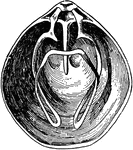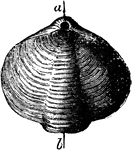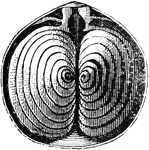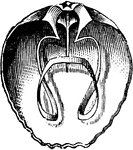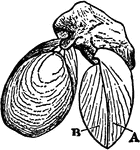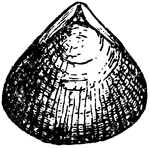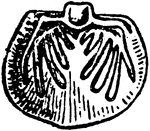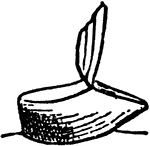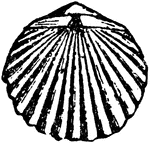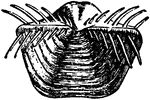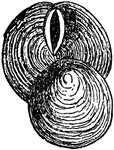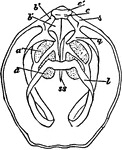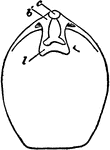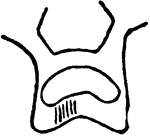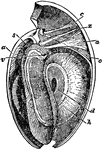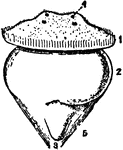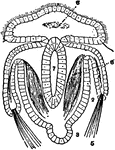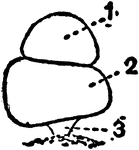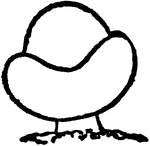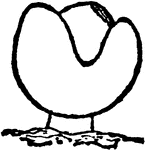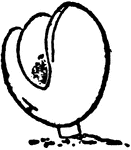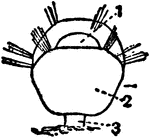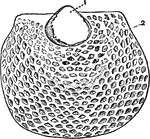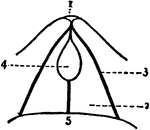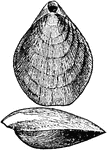Brachiopods
The Brachiopod ClipArt gallery offering 59 images of a mostly extinct phylum of shelled animals. Unlike mollusks, brachiopods have bilateral symmetry across the shell.
Lingula anatina
"The Lingula anatina has a long peduncle issuing from between the umbones. The valves are nearly…

Brachiopod
"Spirifer striatus, Derbyshire; b valve showing internal coil; c portion of coil." -Taylor, 1904

Brachiopod
A Paleozoic brachiopod shell partly broken to show the internal spiral arm-supports. Mississippian limestones.…
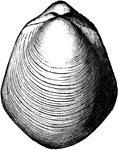
Pentamerus Brachiopod
A mollusk radiate from the Paleozoic time, Pentamerus oblongus, a brachiopod from the Clinton group.
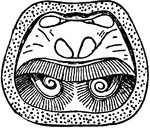
Brachiopoda
Crania anomala. Interior of dorsal valve, showing muscular impressions and labial appendages.

Brachiopoda
Magellania flavescens. Longitudinal section of valves. A, ventral; B, dorsal valves; l, loop; q, crura;…
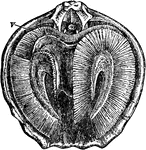
Brachiopoda
Magellania flavescens. Interior of dorsal valve, to show the position of the labial appendages. v, mouth.

Brachiopoda
A diagram of the left half of an Argiope, which has been bisected in the median plane. 1, the ventral…

Brachiopoda
Diagrammatic section through an arm of the lophophore of Crania. 1, the lip; 2, the base of a tentacle…
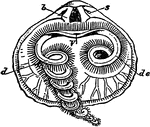
Brachiopoda
Rhynchonella psittacea. Interior of dorsal valve. s, Sockets; b, dental plates; V, mouth; de, labial…

Brachiopoda
Magellania flavescens. Diagram showing the muscular system. M, ventral; N, dorsal valve; l, Loop; V,…

Brachiopoda
Lingula anatina. Diagram showing the muscular system. A, dorsal; B, ventral valve; p, penduncle; e,…
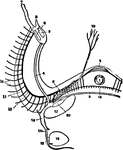
Brachiopoda
Diagram of nervous system of Crania; from the dorsal side. The nerves running to the dorsal parts are…

Brachiopoda
Megathyris larvae stages; the fully formed embryo just before fixing - the neo-embryo of Beecher.
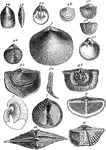
Paleozoic Brachiopods
"Palaeozoic Brachiopods. 1. Lingula Lewisii (Silurian). 2. Obolus Aollinis (Silurian). 3. Leptaena transversalis…
Lingula
The Lingula have tongue-shaped shells with a long fleshy stalk, or pedicle, with which the animal burrows…

Lingula Antigua
The Lingula antigua is a little bivalve shell belonging at the bottom of the class Brachiopoda. The…
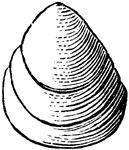
Lingula Prima
The Lingula prima is a little bivalve shell belonging at the bottom of the class Brachiopoda. The inarticulate…
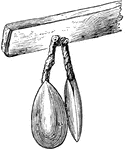
Modern Lingula
Lingula is a genus of brachiopods within the class Lingulata. Lingula is among the few brachiopods surviving…
